- Bitcoin price recorded its lowest weekly close in four months.
- Markets ushered in more volatility this week, with several catalysts lined up, including the release of US CPI and PPI data.
Bitcoin [BTC] Altcoins led a heavy downtrend for most of last week, driven by the selling pressure caused by the Refunds on Mount Gox and BTC sales by Germany.
The flagship crypto took a break from the downtrend on July 6, rising to $58,472 from an intraday low of $53,717 on July 5 before finally resuming losses on July 7.
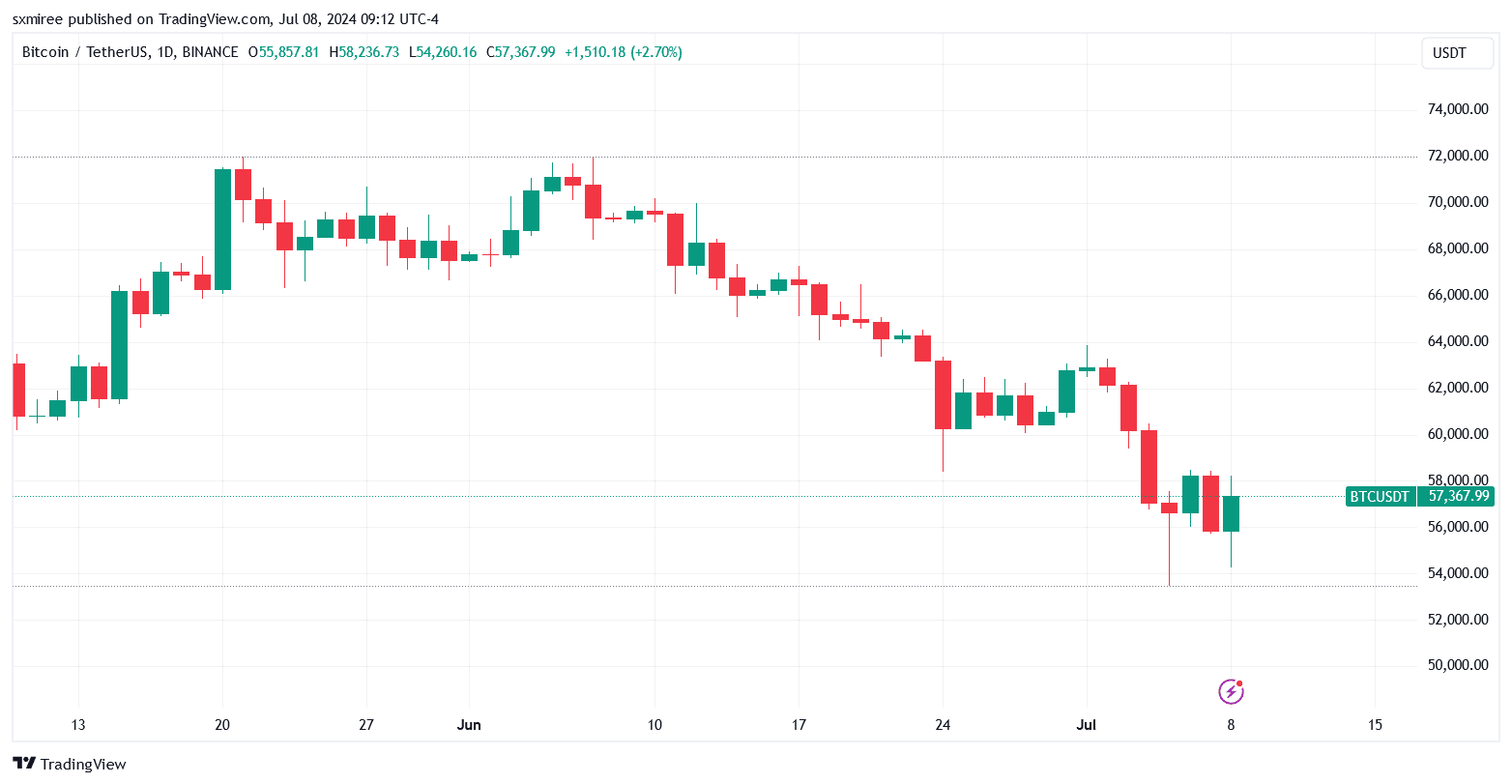

Source: TradingView
Reports of follow-up BTC dumping by Germany also delayed Bitcoin’s positive action on July 8.
Bitcoin technical analysis
Double top formation and moving averages
Bitcoin’s long-term declines have seen a double top position on the daily chart.
The formation of a double top generally implies a bearish reversal, indicating that the asset’s price is likely to fall after failed attempts to break above a major resistance level.
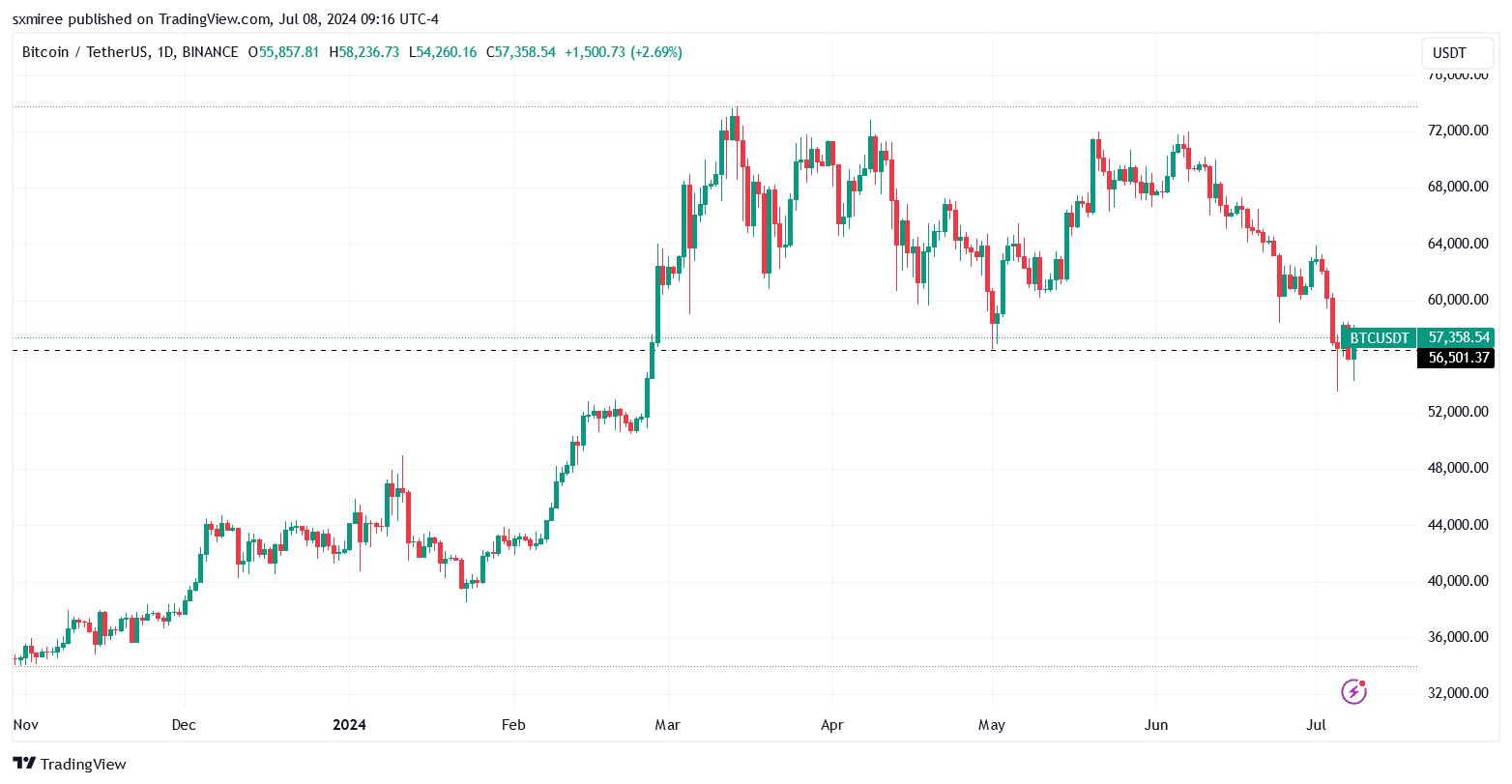

Source: TradingView
The price drop prior to the weekly close confirmed the failure of the multi-monthly consolidation.
On the weekly chart, Bitcoin closed below the lower Bollinger Band, indicating the possibility of lower price targets.
Prices moving outside the bands generally indicate strong trends, while a contraction indicates low volatility and possible upcoming breakouts.
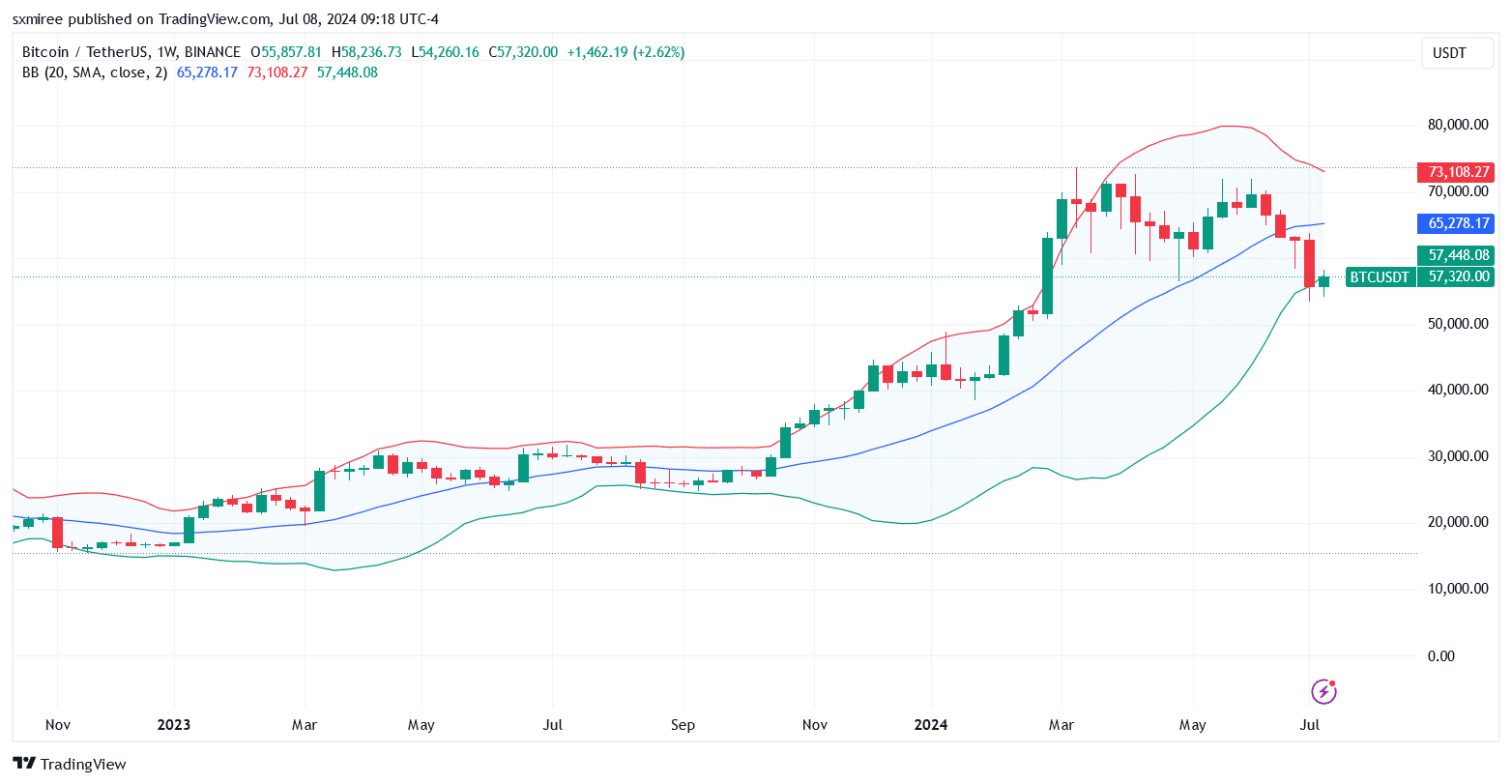
Source: TradingView
It is understood that at the time of writing, Bitcoin was trading below the 50-, 100- and 200-day exponential moving averages (EMA) on the 4-hour chart, in favor of bearish speculators.
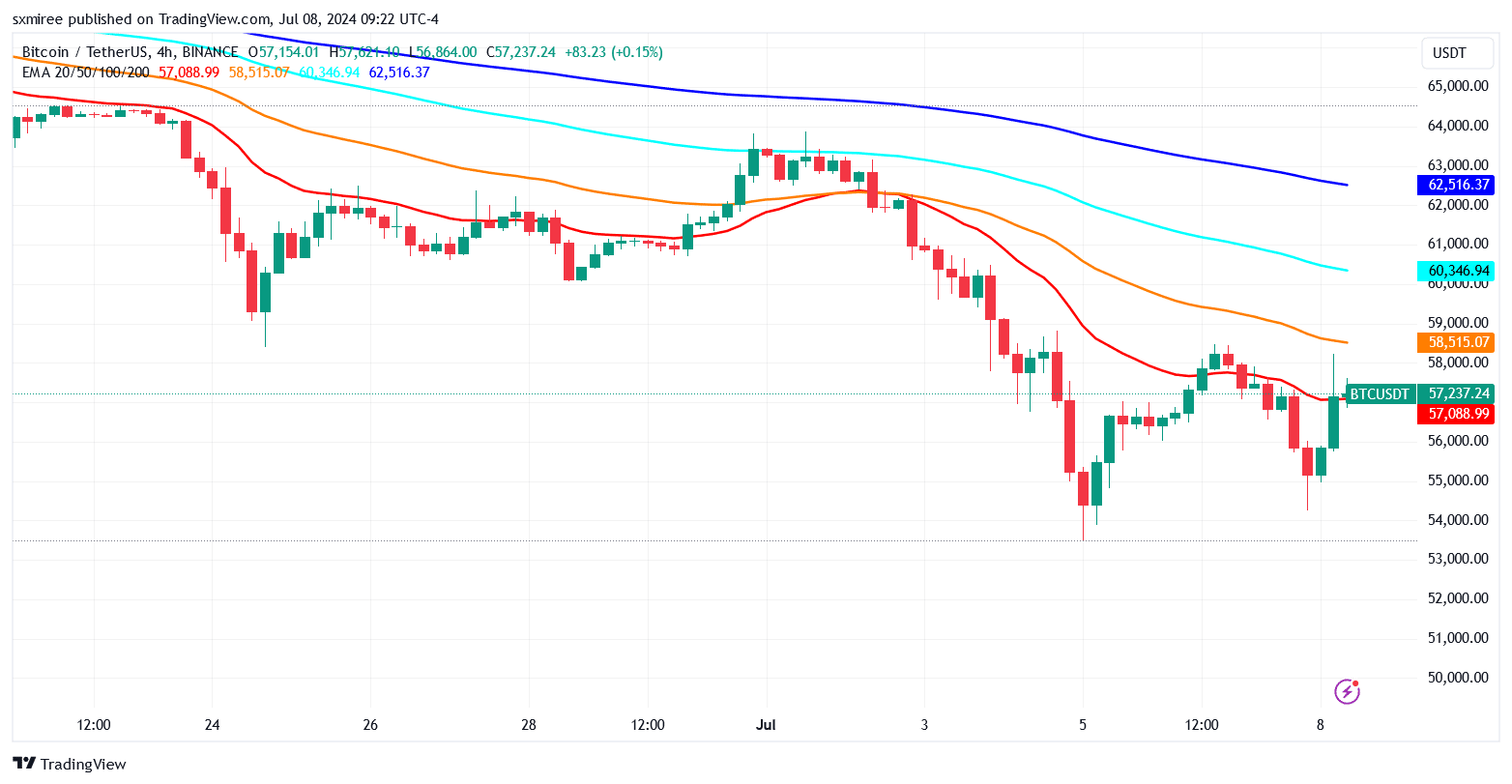
Source: TradingView
To manage the correction, bulls will need to push the price above the flattening 20-day EMA on the 4-hour chart.
Positive divergence on the daily RSI
Bitcoin’s Relative Strength Index hovered below 30 on the daily chart between July 4 and 5, marking the second time in less than three weeks that the RSI fell into oversold territory.
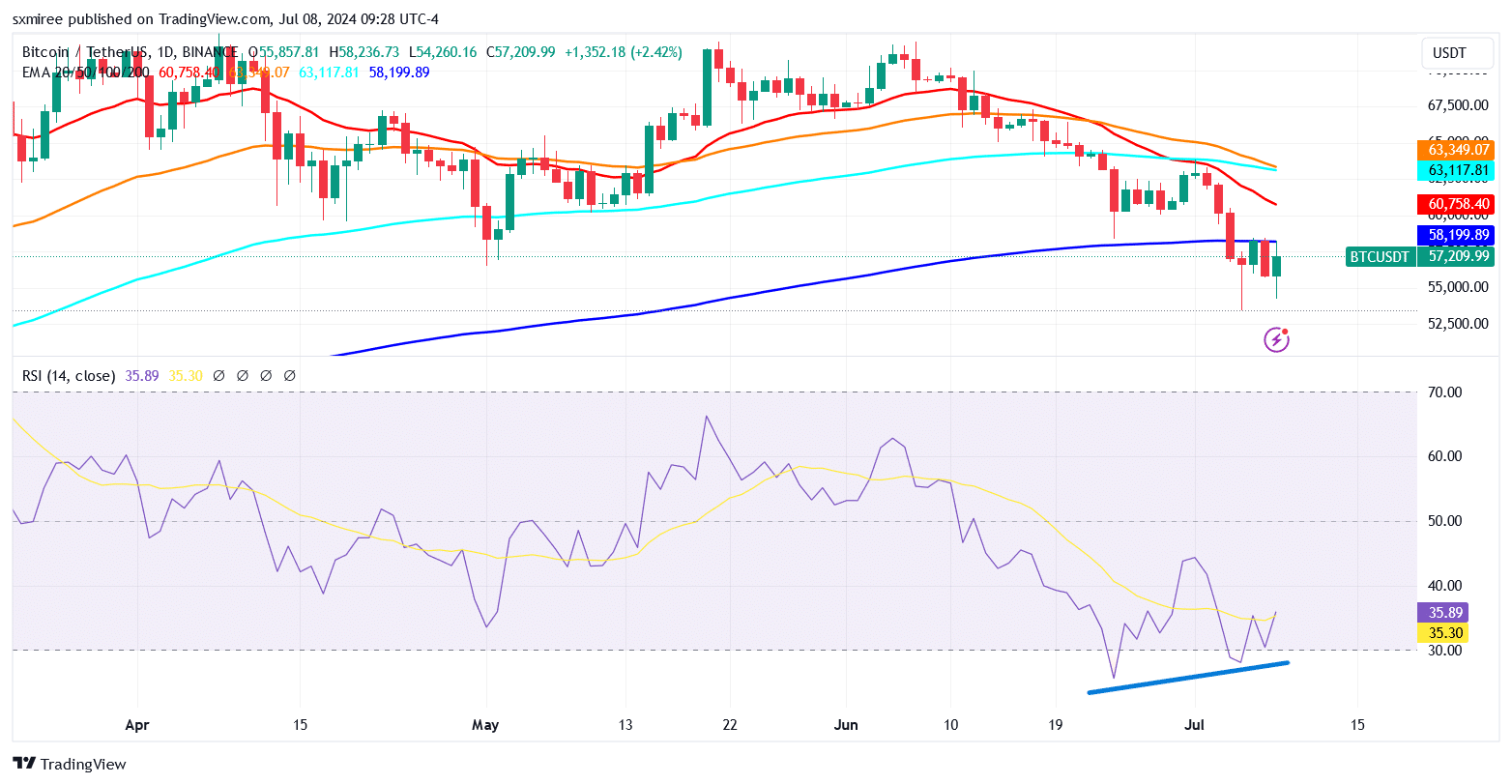
Source: TradingView
The RSI readings on daily timeframes also confirmed a daily bullish divergence, indicating that despite the price of BTC moving lower, the downward momentum could be slowing.
Historically, there has usually been a daily bullish divergence in company of trading setups near bottoms. The daily RSI stood at 36.04 at the time of writing.
Macro stories
Macroeconomic data in the form of the US Consumer Price Index (CPI) and Producer Price Index (PPI) due this week is expected to test the resolve of crypto traders.
Analysts at Citi Research on Sunday predicted that the Fed could cut rates by 200 basis points at eight consecutive meetings from September through July 2025.
The interest rate cuts, which will last until the summer, will lower the benchmark to a range of 3.25%-3.5%.
Lower interest rates are generally bullish for riskier assets like cryptocurrencies because they lower the cost of borrowing and increase liquidity, encouraging investors to seek higher returns in alternative instruments like cryptocurrencies.
The U.S. M2 money supply, which measures the total amount of money in circulation, including cash, checks and savings deposits, is growing.
In the most recent release on June 25, the US M2 money supply stood at 20.96T, compared to 20.87T on May 28 (for April) and 20.84T on April 23 (for March).
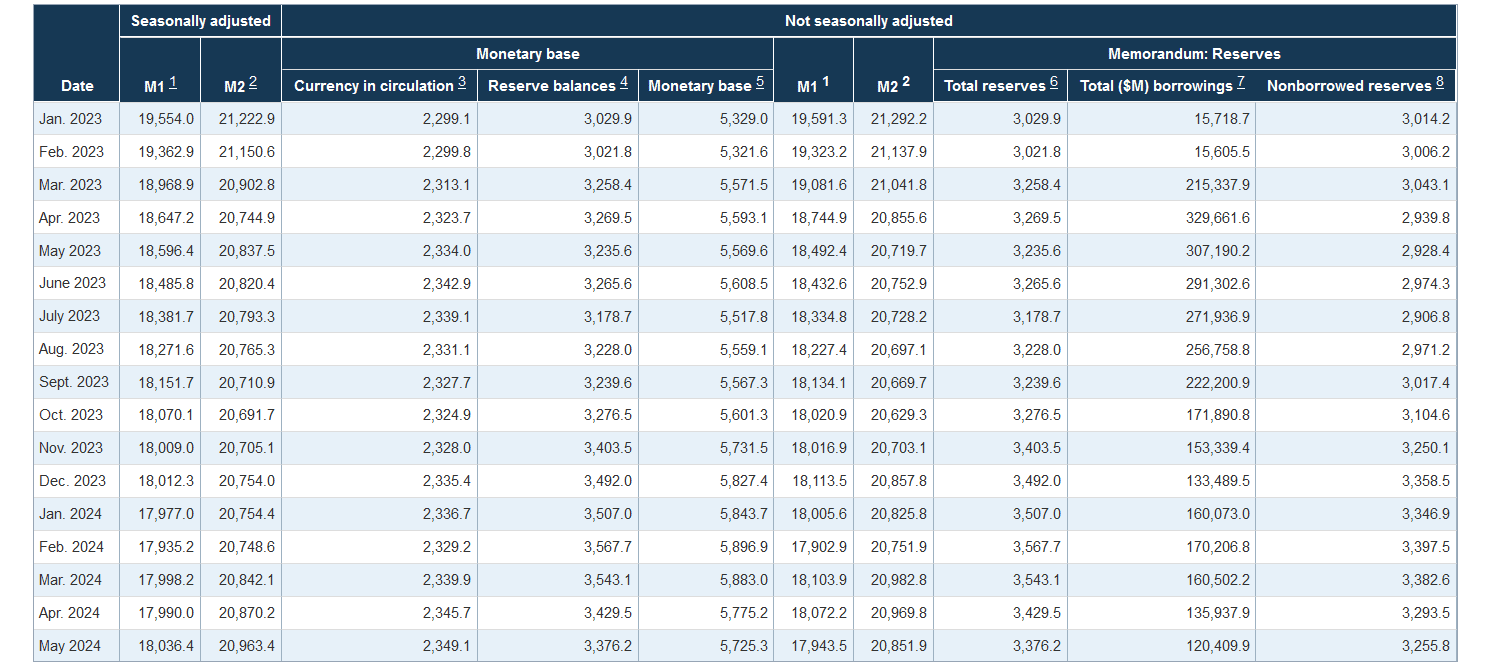

Source: Federal Reserve
Growing M2 supply indicated increased liquidity, which could lead to higher inflation and drive investors to alternative assets such as cryptocurrencies, potentially driving crypto prices higher.
The capitulation of miners signals a potential bottom in the market
The Bitcoin network hash rate (SMA 7 days) fell in June from a high of 656 EH/s on May 27 to a four-month low of 556 EH/s on June 30.
A lower hash rate, the total combined computing power used to mine and process transactions, often reflects miners quitting due to reduced profitability.
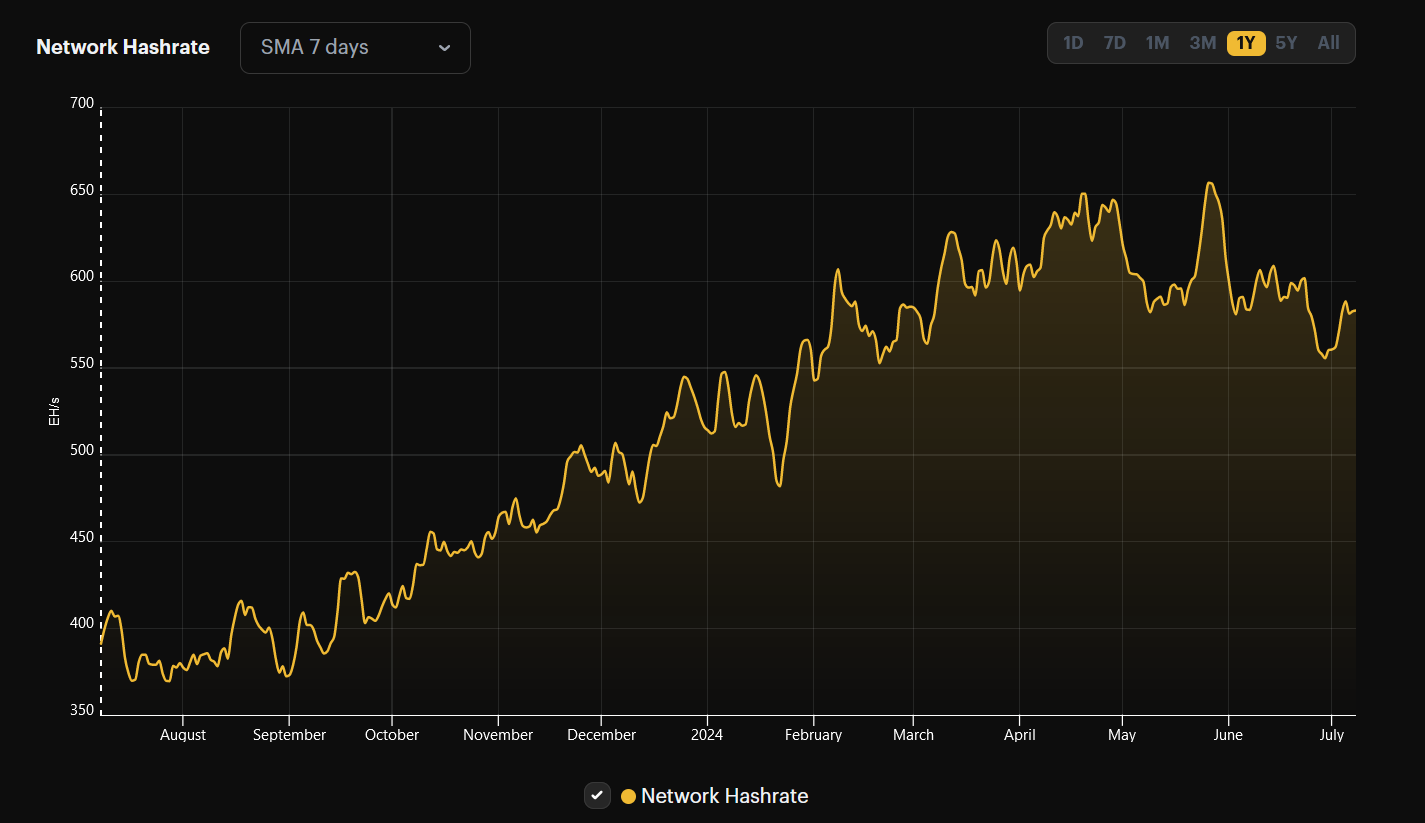

Source: Hashrate index
Read Bitcoin’s [BTC] Price forecast 2024-2025
Thus, the continued drop in hash rate suggested that some miners might scale back their operations.
Sell-offs by mining companies and operational reductions have indicated in the past that prices are near a cyclical low and could recover quickly.

